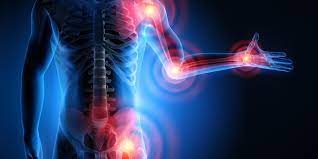Getting older brings with it several issues that nobody ever talks about. Today, let's look at one of them. By the time you are in your 60's, you have probably given your joints a good work out and may be suffering from the active wear and tear you put them through. Over time, the pain in these joints can become unbearable and you have to seek medical help. Steroid injections, physical therapy and alternative medicine work in the short term, but when that fails too, you need to consider replacement.
And then, there is always the issue of falls causing damage to one or two of your joints. As we age and our bones become more and more brittle, joint issues from a fall are commonplace. We explored this topic before here and you can go back and read that post if you missed it.
Joint replacements can greatly improve life by relieving pain and improving mobility. Conditions like arthritis, injury, or general wear and tear cause damage to our joints over time, making basic movements difficult or uncomfortable. In these situations, replacement surgery may offer a solution.
You undergo replacement surgery by having damaged bone and cartilage removed and replaced with artificial parts made from metal, plastic, or ceramic. Common joint replacements are for the hip and knee, replacing only part or all of the damaged joint. Shoulder, ankle, and wrist replacements are also options for severe arthritis or injuries in those areas.
The primary reason you might consider replacement is to eliminate joint pain and regain function. When treatments like medication and physical therapy no longer provide relief, replacement surgery can work wonders. It enables an active, pain-free lifestyle once again.
The procedure typically takes a few hours under general anesthesia. Recovery then involves physical therapy to rebuild strength and range of motion. Pain is managed initially with medications before transitioning to more natural means. Daily activities may need adjusting temporarily to aid healing.
Most rewarding is how replacements transform one's quality of life post-recovery. Freedom from pain opens up opportunities once thought lost, like gardening, bonding with family, or leisurely walks. Confidence and happiness rise with this renewed independence.
If suffering from a joint that limits you, speak with your care team about replacement options. Starting the process could put you on the path to rediscovering favorite pastimes free from discomfort. With modern surgery and rehabilitation, you have so much to gain!
Resources to read about this topic:








No comments:
Post a Comment